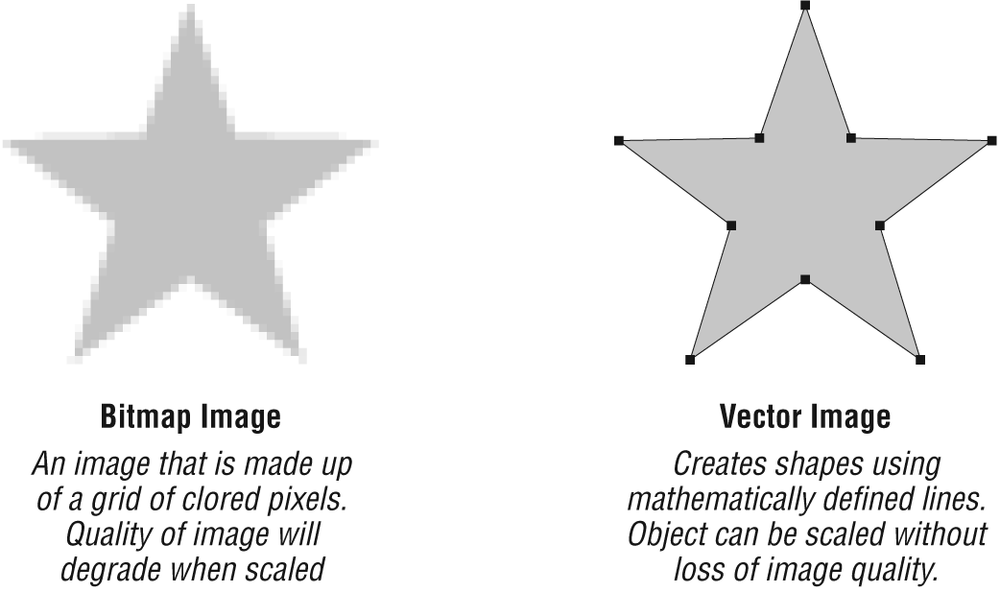Image Resolution
GIFs, JPEGs, and PNGs are pixel-based, or bitmapped (also called raster ), images. When you zoom in, you can see the image is like a mosaic made up of many pixels (tiny, single-colored squares). These are different from vector graphics that are made up of smooth lines and filled areas, all based on mathematical formulas (Figure 28-1).

Figure 28-1. Bitmapped versus vector graphics
When dealing with bitmapped images , you must be aware of the resolution, usually measured in the number of pixels per inch (ppi) of the image. On the Web, graphics are always displayed on low-resolution monitors, so high resolutions typical of print are unnecessary. Web designers typically create graphics at a resolution of 72 ppi as compared to 266 ppi, 600 ppi, or even higher resolutions common to print design.
Working at a low resolution may be an adjustment for a designer accustomed to handling the hi-res images appropriate for print. Most notably, the image quality is lower because there is not as much image information in a given space. This tends to make the image look more grainy or pixelated, and unfortunately, that’s just the nature of images on the Web.
Get Web Design in a Nutshell, 3rd Edition now with the O’Reilly learning platform.
O’Reilly members experience books, live events, courses curated by job role, and more from O’Reilly and nearly 200 top publishers.

